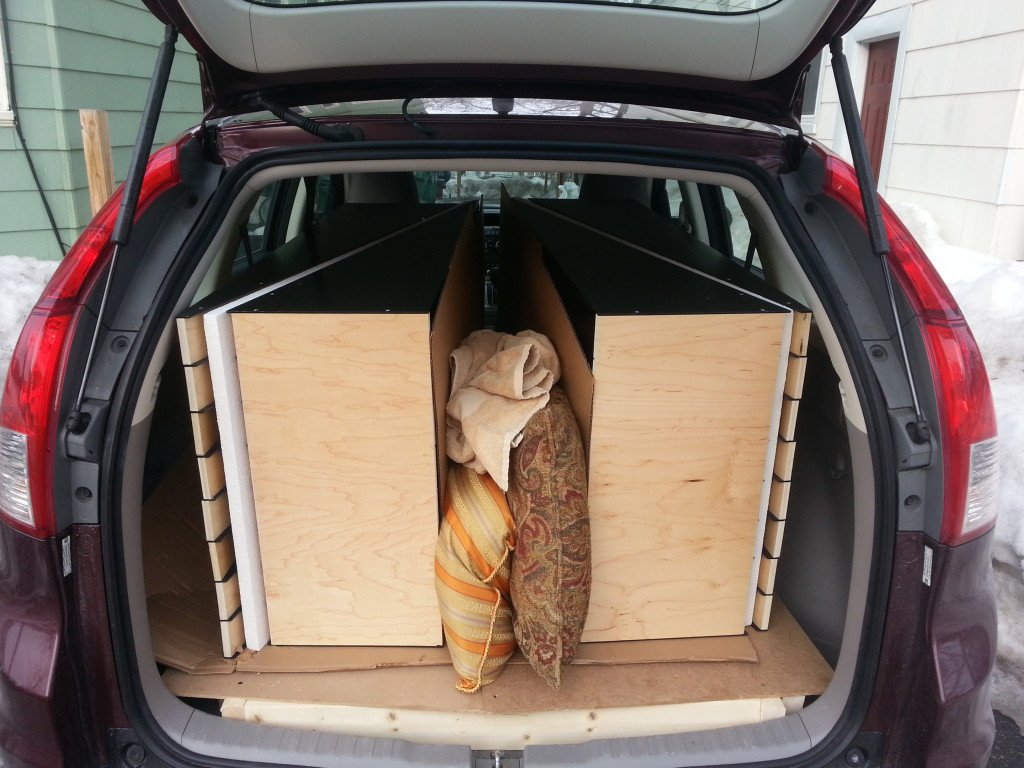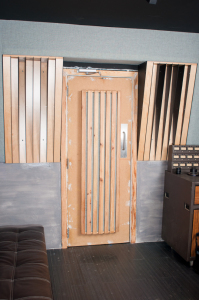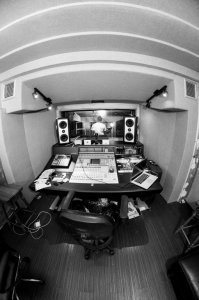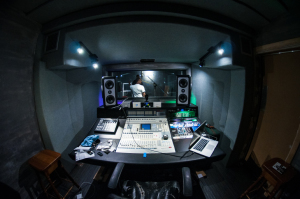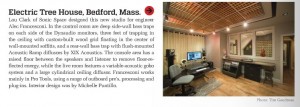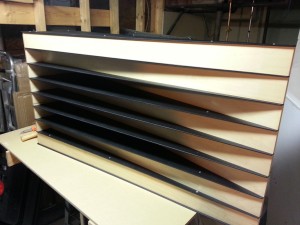These 4 Acoustic Ramps in Black with Rock Maple are headed to Portland, Maine to Pat Keane Mastering which is currently building a new Mastering Room with design work by Lou Clark of Sonic Space.
Category: Acoustic Ramp Diffuser
The studio I designed for Kasey Phillips’ Precision Productions in San Fernando, Trinidad is the set for this music video. Some things to notice: Acoustic Ramps in the rear of the room. A slotted poly diffuser/absorber on the rear door. The only 2″ tape machine in Trinidad is also in the rear of the room. The recording session looks way more fun than what I used to!
Lou Clark of Sonic Space designed Electric Tree House for engineer Alec Francesconi in Bedford, MA. Lou specified for Acoustic Ramps and used them in an extremely creative way as part of a large integrated bass trap on the rear wall of the control room. The picture from Mix shows the front of the room. Here’s the rear of the room:

The photo isn’t quite as fancy as the one in Mix, but it does show a very interesting approach to using both diffusion and low frequency absorption. Go Lou!
The Acoustic Ramp is a wedge-shaped, quadratic residue diffuser (QRD) used to improve the acoustic properties of a room. The depth of the wells between the dividers changes over the length of the diffuser and this greatly improves the effective bandwidth. The ratio relationships between the well depths stay the same. The angled reflectors and wedge shape causes the effect of scattering both vertically and horizontally. We have done a lot of scientific testing and subject critical listening testing.
In critical listening rooms, an array of Acoustic Ramps make an ideal rear-wall treatment that helps to tighten the definition of imaging and clarifies the sound stage. In surround home theaters and group audiophile listening spaces, this rear-wall treatment helps to create a sense of envelopment and immersion for the listeners.
The goal of an Acoustic Ramp diffuser is to control the existing acoustics of the room WITHOUT absorbing the acoustic energy. A reflection of sound off of a flat hard surface can be disorienting and distracting. A reflection can mix with the source of the sound and cause comb-filtering which changes the timbre or tone-color of what you are hearing. People often describe the effect of comb-filtering as “hollowing out” the sound, making the sound “tinny”, or sounding like it is in a “garbage can.” Usually these are not the adjectives we want someone to use when describing our music!
The Acoustic Ramp is available custom built to your exact specifications. The standard Ramp is constructed of 1/2″ Rock Maple plywood reflectors, 1/8″ black powder-coated aluminum dividers and a 3/4″ Rock Maple plywood top plate. The Ramp is 24 1/8″ wide, 12 1/8″ deep and a hair under 45″ tall. Custom ramps are available in almost any size configuration, with any choice of materials with any color powder coating. Here’s photos and posts about some custom versions:
See-Through Acrylic at Andy Hong’s Kimchee Records
MDF and Pine Plywood at Echo Boston
Raw Aluminum and Rock Maple at Paul Pesco’s Studio 44
Custom-made Bamboo Stock Ramp
Last weekend I was doing the first listening and acoustic testing in Larry Clawson’s new XMIX studio. Last year Larry hired me to design his control room and the studio is now nearly completed! Here are some of the pictures of that first test session. The room sound extremely good considering that side walls and ceiling are untreated. Barefoot monitors help. The wood is Ribbon Stripe Sapele. Black granite counter tops.
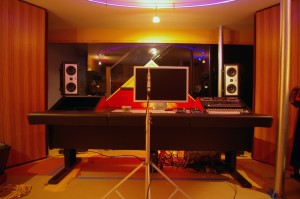
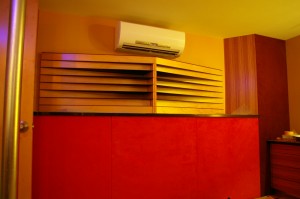
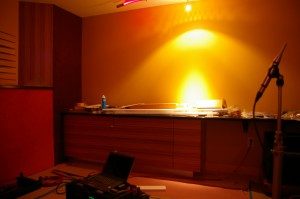
I have known Andy Hong since I worked for him when we were at Reed Elsevier in the late 90’s. Andy’s Kimchee Records was recording and/or putting out some of the best of Boston bands like Karate, Heidi Saperstein, Tugboat Annie and the Willard Grant Conspiracy. At the time I was working with Andy, he was recording “In My Living Room” a compilation of songs recorded…in his living room. Andy advised me when I was at the beginning of building my home studio. Andy is the Gear Review Editor at Tape Op, so when I had developed my Acoustic Ramps into a real product, I got in touch to see if he would be interested in trying out a pair. The demo went great and he ended up reviewing the Ramps and buying 2 standard ramps and two custom made clear plexiglass Ramps to be placed in front of his window to the live room. Here’s two pictures of the Ramps in place:
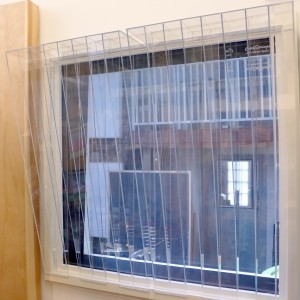
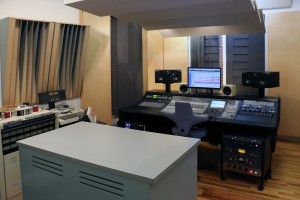
Acoustic Ramp in Black

Another brilliant usage of Acoustic Ramps is shown photographed here. The array of 5 ramps is inverted and installed on an angle to support the slanted rear wall of this control room. The diffusers have been integrated into a bass trap with an 18″ base. Lou Clark of Sonicspace is the designer.
I have found that you need your ears to be about 2-3 times the depth of the diffuser to avoid being able to notice the artifacts or lobing when you move your head back and forth when the Ramps are installed vertically.
The artifacts are only audible when you move your ears up and down when you are very close to the ramps. This configuration is the best sounding of all of the installations for a control room’s rear wall because there is an extremely even diffusion both horizontally and vertically. The improvements in sweet spot imaging are really surprising.

